Year Out/Year In: Electronic Music Digs In and Spreads Out | reviews, news & interviews
Year Out/Year In: Electronic Music Digs In and Spreads Out
Year Out/Year In: Electronic Music Digs In and Spreads Out
A year of tumult, generational shift and technicolour brilliance in clubland
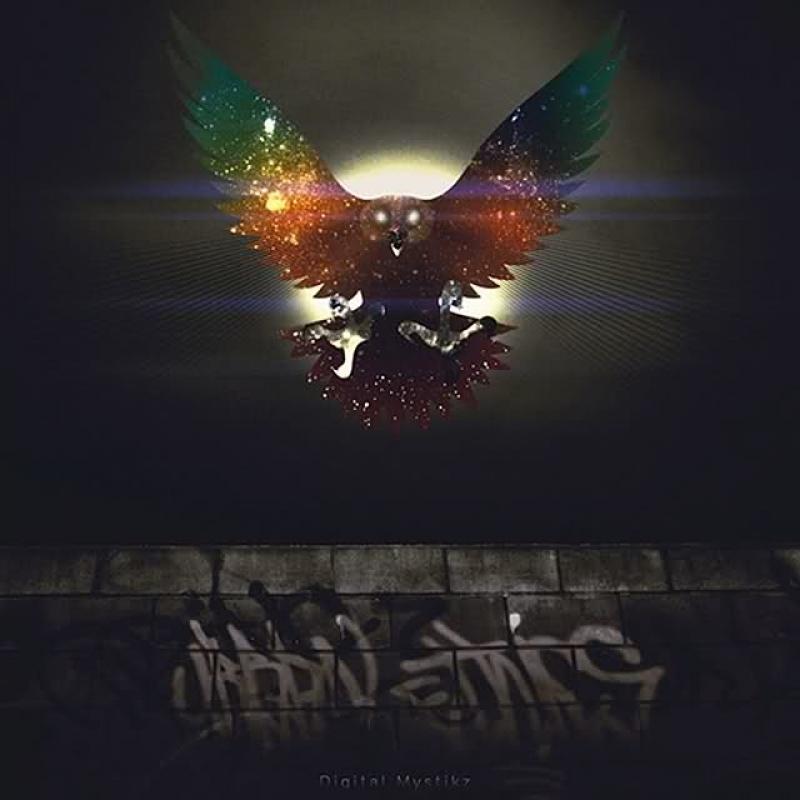
2010 saw some major shifts stirring up the UK club music ecosystem and unleashing some fascinating hybrids and variants of existing sounds out into the wild. As the hefty bass of dubstep muscled its way firmly into the heart of the mainstream, everything else was forced to rearrange its position, with some surprising results.
That movement of dubstep into the mainstream had been a long time coming – indeed, like many of 2010's developments, it was a consolidation of much that had been bubbling away for the past decade – but it marked a fundamental generational shift. Of course, as with any big success this brought the naysayers out in force, pronouncing the creative demise, ossification or simply unhipness of the sound, but it managed to outflank most predictions.
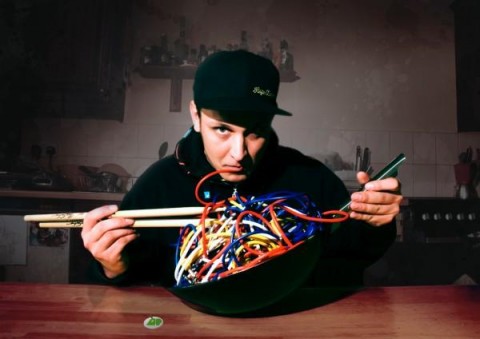 While admittedly the USA took to a buzzing, squalling and perhaps creatively limited version of dubstep more suited to rock crowds, back at home the biggest successes, from Katy B and Magnetic Man, proved that it was capable of becoming a new, sophisticated and subversive kind of dance-pop, the BBC had a symbolic Dubstep Takeover night on Radio 1 and 1Xtra hosted by Mistajam, while a previous generation of big dance acts capitulated to the new breed by working with dubstep artists, most notably in Underworld's collaborations with producer Appleblim and Al Tourettes (pictured right). The genre's other major label signing, the True Tiger collective, also proved that populist needn't equal dumb with a series of big remixes and productions including the joyously confident “Slang Like This” featuring rapper P Money.
While admittedly the USA took to a buzzing, squalling and perhaps creatively limited version of dubstep more suited to rock crowds, back at home the biggest successes, from Katy B and Magnetic Man, proved that it was capable of becoming a new, sophisticated and subversive kind of dance-pop, the BBC had a symbolic Dubstep Takeover night on Radio 1 and 1Xtra hosted by Mistajam, while a previous generation of big dance acts capitulated to the new breed by working with dubstep artists, most notably in Underworld's collaborations with producer Appleblim and Al Tourettes (pictured right). The genre's other major label signing, the True Tiger collective, also proved that populist needn't equal dumb with a series of big remixes and productions including the joyously confident “Slang Like This” featuring rapper P Money.
Watch the video for "Slang Like This" by True Tiger feat P Money
The two artists previously most often blamed for dubstep's harder direction – sometime production partners Caspa and Rusko – proved they were not one-dimensional, too: Rusko's production work on M.I.A.'s /\/\/\Y/\ album contributed to a punky yet intricate cultural collage, while Caspa's Dub Police label increasingly shifted to a high-gloss sound that harked back to dubstep's club roots even as it showed arena-sized ambition. This sense of “classic dubstep” was upheld even more by other key scene players, who made some of the best material of their careers.
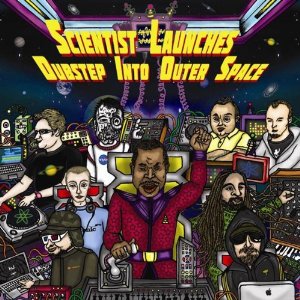 Two albums were released in vinyl-only editions by Mala and Coki, aka Digital Mystikz, one produced by each of the duo, and both reaffirming the Mystikz's sound as intense, Futurist in outlook but rooted in a reggae soundsystem mentality. Meanwhile other foundational dubsteppers like Hatcha, Silkie, Quest, MRK1, Cotti, Kromestar, Cyrus and Heny G, plus labels like DJ Chef's Sub Freq, Mala's Deep Medi Muzik and DJ N-Type's Wheel & Deal and Sin City all brought out releases that showed that the poised, elegant and immersive – yet still hefty, not gentrified or Starbucks-friendly – version of the sound was still creatively vital. Mention must also go to Frenchman Von D, whose particularly luscious releases increasingly pointed to the fact that this kind of dubstep can travel as well as the noisier stuff, and to a brilliant compilation, Worth the Weight, which proved the vital contribution of Bristol's tight-knit musical community to the genre. And talking of Bristol, to the quite astounding Scientist Launches Dubstep into Outer Space (pictured left) which saw Bristolian DJ Pinch organising collaborations between dubstep's finest and original Jamaican dub producer Hopeton Brown aka Scientist.
Two albums were released in vinyl-only editions by Mala and Coki, aka Digital Mystikz, one produced by each of the duo, and both reaffirming the Mystikz's sound as intense, Futurist in outlook but rooted in a reggae soundsystem mentality. Meanwhile other foundational dubsteppers like Hatcha, Silkie, Quest, MRK1, Cotti, Kromestar, Cyrus and Heny G, plus labels like DJ Chef's Sub Freq, Mala's Deep Medi Muzik and DJ N-Type's Wheel & Deal and Sin City all brought out releases that showed that the poised, elegant and immersive – yet still hefty, not gentrified or Starbucks-friendly – version of the sound was still creatively vital. Mention must also go to Frenchman Von D, whose particularly luscious releases increasingly pointed to the fact that this kind of dubstep can travel as well as the noisier stuff, and to a brilliant compilation, Worth the Weight, which proved the vital contribution of Bristol's tight-knit musical community to the genre. And talking of Bristol, to the quite astounding Scientist Launches Dubstep into Outer Space (pictured left) which saw Bristolian DJ Pinch organising collaborations between dubstep's finest and original Jamaican dub producer Hopeton Brown aka Scientist.
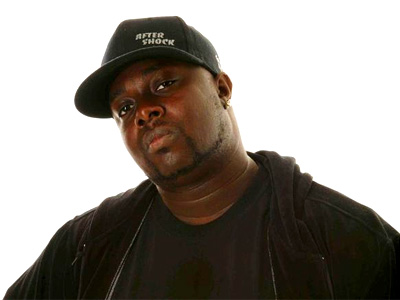 Dubstep's inner-city first cousin, grime, also showed its staying power in 2010: in fact, if anything, it underwent a great creative renaissance. While some rappers became pop successes, and others reasserted the genre's innate aggression, it was grime's producers that really led the way creatively. The way had been forged by one of the scene's key architects, Terror Danjah (pictured right), who built links from the sometimes insular grime world to dubstep and electronica labels, and released the sterling Undeniable album – and with the rise of the Butterz show on Rinse FM, and the associated label and blog, the floodgates opened for grime as an instrumental form in its own right rather than as backing for rappers.
Dubstep's inner-city first cousin, grime, also showed its staying power in 2010: in fact, if anything, it underwent a great creative renaissance. While some rappers became pop successes, and others reasserted the genre's innate aggression, it was grime's producers that really led the way creatively. The way had been forged by one of the scene's key architects, Terror Danjah (pictured right), who built links from the sometimes insular grime world to dubstep and electronica labels, and released the sterling Undeniable album – and with the rise of the Butterz show on Rinse FM, and the associated label and blog, the floodgates opened for grime as an instrumental form in its own right rather than as backing for rappers.
What the sound has lost in lo-fi experimentalism and alien-signal oddness it makes up for in confident swagger and sheer juddering dancefloor oomph. Teddy & G Tank's Ghanaian Fire album was full of rude energy, as was the frankly ludicrous “Spartan Riddim” by DJ Spooky which gave the latter part of the year a kick up the backside. Other highlights came from artists like SRC, TRC, Darq E Freaker, Royal T, DJ Spooky, Swindle and many others – with exciting labels like Oil Gang, Boogaloo City and Terror Danjah's own Hardrive springing up along with Butterz and the more established No Hats No Hoods to bring instrumental grime to purchasers. Meanwhile newcomers like Luton's Gully Floss and Bristol's Mensah explored an ever-more blurred but highly fertile region between grime and dubstep.
Watch the video for Katy B's "Lights On"
Underground house music continued to keep clubs moving. The huge hype around the subgenre “UK funky” in 2009 died down a bit, although producers like Roska, DVA, Cooly G and newcomers Funkystepz and R1 Ryderz proved it was a constantly developing style, and as the year closed the joyous “Lights On” by Katy B and Ms Dynamite (produced by scene originator Geeneus) reached the UK Top Five, hinting at major future crossover for the sound. Elsewhere more experimental house music continued to fuse with jazzier and more conspicuously electronic sounds producing great releases from Actress, Lukid, Floating Points, Wbeeza, Joy Orbison, Braiden and a whole lot more.
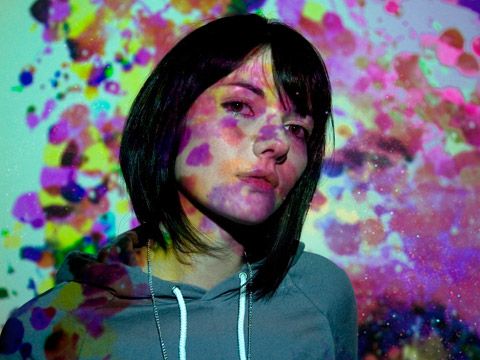 The gradual rise of a particular style of rhythmically loose, psychedelic hip-hop influenced sound continued, too. The ghastly genre name from a couple of years back, “wonky”, failed to stick, and while key artists Illum Sphere and Blue Daisy were happy to call their music “mutant”, in general there was no name for the brilliant spew of music that came from the very peculiar likes of Rustie, Slugabed, Fantastic Mr Fox, Hem, 1000names etc, and in fact this seemed to suit it. Meanwhile club nights like Brighton's Donky Pitch and Illum Sphere and friends' Hoya:Hoya in Manchester (resident DJ Eclair Fifi, also part of the Scottish LuckyMe collective, pictured left) proved that despite its oddness, this sound was far from nerdy home-listening music, but was still all about the club groove.
The gradual rise of a particular style of rhythmically loose, psychedelic hip-hop influenced sound continued, too. The ghastly genre name from a couple of years back, “wonky”, failed to stick, and while key artists Illum Sphere and Blue Daisy were happy to call their music “mutant”, in general there was no name for the brilliant spew of music that came from the very peculiar likes of Rustie, Slugabed, Fantastic Mr Fox, Hem, 1000names etc, and in fact this seemed to suit it. Meanwhile club nights like Brighton's Donky Pitch and Illum Sphere and friends' Hoya:Hoya in Manchester (resident DJ Eclair Fifi, also part of the Scottish LuckyMe collective, pictured left) proved that despite its oddness, this sound was far from nerdy home-listening music, but was still all about the club groove.
And that was only the beginning of nameless and overlapping genres in 2010. A new spacious, melancholy offspring of drum'n'bass pioneered by Instra:Mental and dBridge began to spread with dubsteppers like Skream and Cyrus and experimentalists like Geiom adding their versions. An explosion of sonic colour came from labels like London's Night Slugs, Eglo and Swamp 81, Dublin's All City, and Glasgow's Numbers and LuckyMe, all rippling with elements of all the genres mentioned above and more, including the riotous "purple" sound of Bristolian grime-funk fusionist Joker, the slick mainstream R&B of producers like The-Dream, and the suddenly popular and deeply bizarre bass-heavy sound of Chicago's urban dance battles known as "juke" or "footwork". With this collision of synthetic melodies and unusual twists on familiar rhythms a sense of euphoria and originality was being created that hinted at the heyday of rave without being retro in any sense.
Listen to Ramadanman's "Fall Short"
And among all this, true one-offs young and old like Om Unit, Numan, LHF, Zomby, Mark Pritchard, James Blake, Mizz Beats, Redlight, Untold and Ramadanman threw out ever-stranger hybrids that were sophisticated, avant-garde and party-rocking all at the same time. Yes, it seems disorienting, and yes, it's possible to get snowblind among all these variants and sub-variants; even this roll call here represents but a dip of a toe into the sounds of clubland. But these artists are all engaging with their music's past and present with precision and discrimination, not with a blind need to combine things in some bland or chaotic postmodern stew. Electronic music continued to short-circuit social and cultural expectations and expand in every direction. With internet broadcast channels like SBTV, GetDarkerTV, The Boiler Room, UKF and hundreds more giving punters the chance to come face to face with DJs and vocalists as they performed wherever they might be, this was the year the 21st century finally felt like the future which rave and techno had promised all those years ago.
Explore topics
Share this article
Add comment
The future of Arts Journalism
You can stop theartsdesk.com closing!
We urgently need financing to survive. Our fundraising drive has thus far raised £49,000 but we need to reach £100,000 or we will be forced to close. Please contribute here: https://gofund.me/c3f6033d
And if you can forward this information to anyone who might assist, we’d be grateful.

Subscribe to theartsdesk.com
Thank you for continuing to read our work on theartsdesk.com. For unlimited access to every article in its entirety, including our archive of more than 15,000 pieces, we're asking for £5 per month or £40 per year. We feel it's a very good deal, and hope you do too.
To take a subscription now simply click here.
And if you're looking for that extra gift for a friend or family member, why not treat them to a theartsdesk.com gift subscription?
more New music
 Album: The Hives - The Hives Forever, Forever The Hives
No power ballads, no acoustic interludes - just speedy rock’n’roll all the way
Album: The Hives - The Hives Forever, Forever The Hives
No power ballads, no acoustic interludes - just speedy rock’n’roll all the way
 Album: Benedicte Maurseth - Mirra
Haunting, intense evocation of Norway’s uplands and its wildlife
Album: Benedicte Maurseth - Mirra
Haunting, intense evocation of Norway’s uplands and its wildlife
 Album: Nova Twins - Parasites & Butterflies
Exciting London duo turn inward and more introspective with their third album while retaining their trademark hybrid sound
Album: Nova Twins - Parasites & Butterflies
Exciting London duo turn inward and more introspective with their third album while retaining their trademark hybrid sound
 Music Reissues Weekly: The Beatles - What's The New, Mary Jane
John Lennon’s queasy, see-sawing oddity becomes the subject of a whole album
Music Reissues Weekly: The Beatles - What's The New, Mary Jane
John Lennon’s queasy, see-sawing oddity becomes the subject of a whole album
 The Maccabees, Barrowland, Glasgow review - indie band return with both emotion and quality
The five-piece's reunion showed their music has stood the test of time.
The Maccabees, Barrowland, Glasgow review - indie band return with both emotion and quality
The five-piece's reunion showed their music has stood the test of time.
 Album: Blood Orange - Essex Honey
A triumph for the artist who doesn't clamour for attention but just keeps growing
Album: Blood Orange - Essex Honey
A triumph for the artist who doesn't clamour for attention but just keeps growing
 Houghton / We Out Here festivals review - an ultra-marathon of community vibes
Two different but overlapping flavours of subculture full of vigour
Houghton / We Out Here festivals review - an ultra-marathon of community vibes
Two different but overlapping flavours of subculture full of vigour
 Album: Wolf Alice - Clearing
Ten years from their debut, Wolf Alice once again make magic from the familiar
Album: Wolf Alice - Clearing
Ten years from their debut, Wolf Alice once again make magic from the familiar
 Album: Deftones - Private Music
Deftones give us a glimmer of hope, but that's all...
Album: Deftones - Private Music
Deftones give us a glimmer of hope, but that's all...
 Album: Eve Adams - American Dust
Taking inspiration from the Californian desert
Album: Eve Adams - American Dust
Taking inspiration from the Californian desert
 Gibby Haynes, O2 Academy 2, Birmingham review - ex-Butthole Surfer goes School of Rock
Butthole Surfers’ frontman is still flying his freak flag but in a slightly more restrained manner
Gibby Haynes, O2 Academy 2, Birmingham review - ex-Butthole Surfer goes School of Rock
Butthole Surfers’ frontman is still flying his freak flag but in a slightly more restrained manner
 Album: Adrian Sherwood - The Collapse of Everything
The dub maestro stretches out and chills
Album: Adrian Sherwood - The Collapse of Everything
The dub maestro stretches out and chills

Comments
...